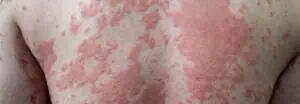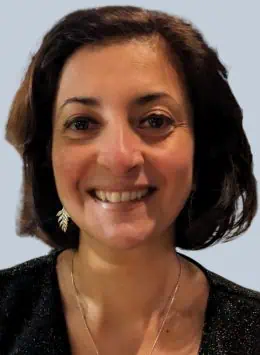Oculoplastic Surgeons in London
Home » Treatments » Oculoplastic Surgeons in London
Transform Your Look With Experts!
Get in touch now, there is no reason for you to wait.
Award winning dermatology service, with over 20 years of experience
Short waiting lists, on some occasions offering same week appointments
Safe environment, in Care Quality Commission approved facilities
Oculoplastic Surgeon Harley Street
Oculoplastic surgeons are trained eye doctors, who understand the complexity of the eye and can carry out both medical and cosmetic surgery on the eye and eyelids. Typical surgery performed by oculoplastic surgeons includes the removal of eyelid lumps and cysts, the repair of eyelid complications, such as where the eyelid turns in or out (entropion and ectropion) or droops (ptosis corrections) and eyelid reshaping (blepharoplasty). Orbital (eye socket) surgery and lacrimal (watery eye/tear duct) surgery are also regularly performed by Oculoplastic Surgeons.
WHAT OCULOPLASTIC TREATMENTS ARE AVALIABLE?
At Stratum Dermatology Clinics, we offer a wide range of oculoplastic treatments to meet the unique needs of our patients. Our experienced physicians have years of specialised training in this field and are equipped with the latest technologies and techniques to provide top-quality care and results. Whether you’re looking for blepharoplasty to correct sagging eyelids and under-eye bags, or want to explore your options for Botox injections to reduce fine lines and wrinkles around your eyes, we can help.
EYELID LUMPS AND CYSTS
An eyelid cyst is a common condition, often called a chalazion or meibomian cyst, is a small lump in the eyelid that contains fluid. This cyst is caused by a blockage in the meibomian gland, which is located in the eyelid, and becomes inflamed or infected which can lead to swelling. The cyst can cause mild pain or irritation and appear red and inflamed. In some cases the cyst may be large enough to block an area of your vision or press on the eyeball causing blurred vision. If other treatments aimed at reducing the inflammation have not worked, a cyst can be removed by a small incision and curettage operation under local anaesthetic, which involves making a small cut to the cyst and then draining out its contents. Eyelid lumps such as skin tags are common and can be easily removed under local anaesthetic.
MALPOSITIONS OF THE EYELID
Eyelid malposition is a condition where the eyelid is not positioned against the eyeball in the way it should be. Not only a cosmetic problem, but this condition can also sometimes cause pain and redness of the eyeball, blurry vision and in some cases damage to the cornea. The malposition of the eyelid can take on many different forms. The eyelid can turn outwards (ectropion), turn inwards (entropion) or droop over the eyeball (ptosis). In most cases, this condition is associated with ageing, and typically occurs because the skin and muscles of the eyelids stretch as you age. There are a small number of cases where these malpositions of the eyelid can occur due to trauma or due to another illness. Malpositions of the eyelid can be treated using surgery, often performed under local anaesthetic.
BLEPHAROPLASTY
As you get older, your skin becomes less elastic and gravity can cause it to sag. Skin sagging around the eyes can be ageing and affect a person’s confidence. A blepharoplasty, or eyelid surgery, is a cosmetic operation to tighten the skin and soft tissues of your eyelids, resulting in a more youthful look.
A blepharoplasty is a relatively short cosmetic procedure, taking around one hour to complete and usually performed under a local anaesthetic. A small cut is made along the natural crease of the eyelid, excess skin and fat is removed and then the cut is closed using very fine stitches. You will be able to return home shortly after the operation and are likely to experience some swelling and bruising in the days following your eyelid surgery. You will be required to return back to the clinic after 7 days to have your stitches removed and the results assessed by your oculoplastic surgeon. You should be able to return back to normal activities a week or two following the eyelid surgery and high impact exercise is not advised for the first month post surgery.
You will be able to see the final results of the eyelid surgery a few months after the operation once all swelling has gone and the wound is fully healed. It is very unlikely you will need another eyelid surgery, with results lasting for 5 to 10 years and in some cases the improvements are permanent. It is important to note that naturally the face will continue to age over time, but the effects of eyelid surgery will make you appear younger than if you had not had the procedure.
WATERY EYE
There are a number of different procedures that may be required to correct a watery eye which will be discussed with you in clinic. If you present with a watery eye we may need to syringe your tear duct. The aim is to find out whether or not you have a blockage in the tear system. In over a third of cases a watery eye is related to a blockage in the passage way between the eyelid and the nose. This passage way normally drains the tears from the eye into the nose at which point the tears pass into the throat and is known as the naso-lacrimal or tear duct.
The standard treatment for nasolacrimal duct obstruction (NLDO) is a dacryocystorhinostomy (DCR) procedure. This effectively bypasses the blockage in the tear duct by making a small hole in the bone on the side of your nose. The tears can then drain into the lacrimal sac and into the nose via newly fashioned pathway. This surgery can be performed either through a small incision on the side of the nose (external approach) or by using specialised endoscopes via the nose (endoscopic approach).
In some cases the punctum (the entrance to the tear duct) is too small. This may prevent the tears from draining which can give you a watery eye. When punctal stenosis is present we may need to enlarge your punctum by excising a small part of the tear duct. This is called a punctoplasty.
FREQUENTLY ASKED QUESTIONS
WHAT LUMPS OCCUR ON THE EYELID?
Many different types of lesions can occur on the eyelid. For the most part these are benign however some lesions do need treatment more urgently. Any lesion that you have will be examined clinically and discussed with you.
We will remove lesions for a number of reasons:
To gain a diagnosis histologically.
To improve symptoms such as irritation, discomfort or reduction in vision.
To improve the appearance of the eyelid.
HOW CAN A DRY EYE BE TREATED?
If you think of your eye as a bath, your dry eye occurs when the bath is ’empty’. This can occur because the ‘tap’ or tear gland does not produce enough tears. One method of improving the surface of the eye (akin to filling the bath) is to put a plug in the tear duct. These are known as punctal plugs and can significantly improve dry eye in cases where lubricants alone are ineffective.
WHAT IS DERMATOCHALASIS?
Dermatochalasis is the medical term for excess skin of the upper eyelid otherwise known as hooding. On occasion this can affect your field of vision.
HEAR FROM OUR PATIENTS
Start Your Journey With Us
Please fill in this form and one of our team will give you a call back to arrange a consultation with one of our expert dermatologists.
WHY TREAT YOUR EYE CONDITION AT THE HARLEY STREET DERMATOLOGY CLINIC?
When you have a chronic skin condition that will require ongoing treatment, having the right dermatologist is especially important. We want you to feel confident that we’re providing you with the best possible care, and to always feel as comfortable as possible with your dermatologist.
The Harley Street Dermatology Clinic specialises in conditions affecting the skin, hair and nails. Our goal is to provide all the care that you need when you’re experiencing these kinds of problems. We want to make it easy for you to access the best oculoplastic surgeon London.
The clinic is conveniently located in Central London, so it’s easy to visit us if you need to see a dermatologist. You will find yourself in a very comfortable and welcoming environment. We have created a relaxing space where you will receive the highest quality of care. We are regulated by the Care Quality Commission, are part of the British Association of Dermatologists and are top rated by patients of Doctify so you can be sure of safe and effective treatment with us.
INSIGHTS AND ADVICE

Combat Common Autumn Skin Conditions for Healthier Skin
Autumn is a time when the world transforms. Leaves turn brilliant shades of red and gold, temperatures drop and the air becomes crisp. While this season offers a picturesque backdrop, it also presents unique challenges for our skin. For skincare lovers and beauty enthusiasts, adapting

Eczema Awareness Month – A Guide to Understanding and Managing Your Skin
Eczema Awareness Month is a dedicated time to shine a light on a condition that affects millions worldwide. If you’re one of the many eczema sufferers, you’re likely familiar with the challenges of managing this skin condition. October aims to educate, support and empower those

Psoriasis Awareness Month: Awareness, Treatments and Support
Understanding Psoriasis Awareness Month Every year, Psoriasis Awareness Month is celebrated in August. It’s a time dedicated to educating people about psoriasis, a chronic skin condition that affects millions worldwide. This awareness campaign aims to reduce the stigma associated with psoriasis, encourage early detection and








